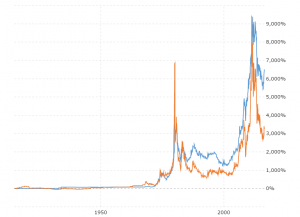The $3 Gold Coin
Yes, that’s right, there is such as thing as a $3 coin made by the US Mint for 35 years, between 1854 and 1889. In the early 19th century gold coins were overvalued – their face value was below their melt value, so once minted they were exported for use in international trade. To keep gold coins in circulation in America, Congress passed laws allowing the minting of small-value coins with a face value greater than their melt value. These coins were not immediately minted, until a specific and interesting issue arose.
Letter writing was the only means of communication in those times, and most people wrote many letters a day, and needed many postage stamps. The cost of postage was an important issue, especially for businesses, and in 1851, after extensive lobbying, Congress reduced the price of postage from 5 cents to 3 cents. At the same time, they authorized a 3-cent silver coin to make purchasing easier. A few years later, given that stamps were sold in sheets of 100, a $3 gold coin was authorized, to simplify purchasing these sheets. The coin is 90% gold, with 10% copper added, to reduce its melt value and keep it below the face value, as was intended by the earlier legislation.
This is a beautiful coin, and it is interesting because for the first time we see a distinctively ‘American’ quality to the design, and an abandoning of the European Greek and Roman models that were widespread on currency. We find Liberty as an Indian Princess on the Obverse, surrounded by the words UNITED STATES OF AMERICA. The word LIBERTY is on the headband of the feather headdress of the princess, believed to have been modeled on Sarah, the daughter of the designer, James Burton Longacre, the Mint’s fourth Engraver. Despite the ‘American’ flavor, the design has been criticized because the feathers are not naturalistic, but instead they look more like something seen on a saloon dancer than a Native American.
The Reverse features an interesting ‘U’-shaped wreath, showing a selection of agricultural plants, including heads of wheat, corn cobs in their leaves, tobacco leaves, and the maple-like leaves of the cotton plant, along with cotton bolls. This selection reminds us today of the supremacy of agriculture in the American economy. Enclosed by the wreath are the words ‘3 DOLLARS’ and the year of minting.
The first run of 10,000 coins was struck in 1854, and the following year, following complaints from the public, the size of the lettering of the word ‘dollars’ was increased, from 1855 onwards. The coins were widely used on the West Coast for some years, because there, in that frontier land, gold and silver were much more widely used than paper money. In the East there was much less usage, and the Civil War came along and disrupted business, further reducing the circulation and usage of the coin. In 1889 the last of these unique $3 coins was minted, and they know can only be seen in collector’s hands.
















